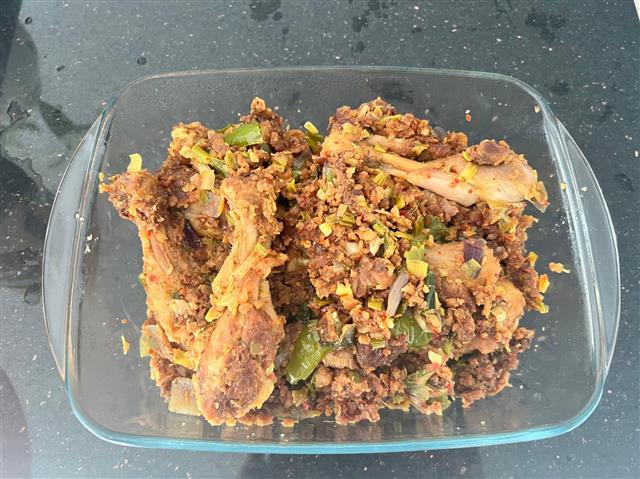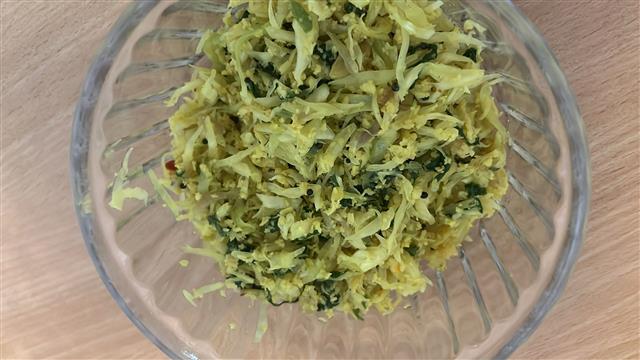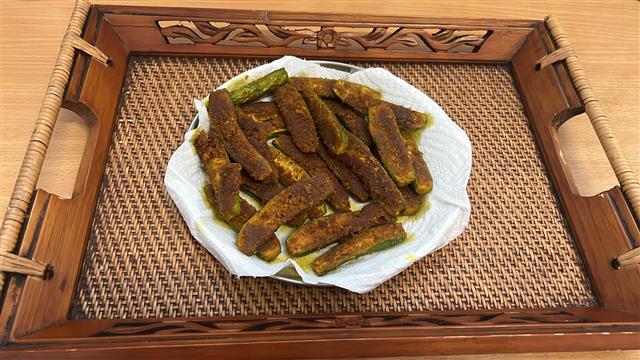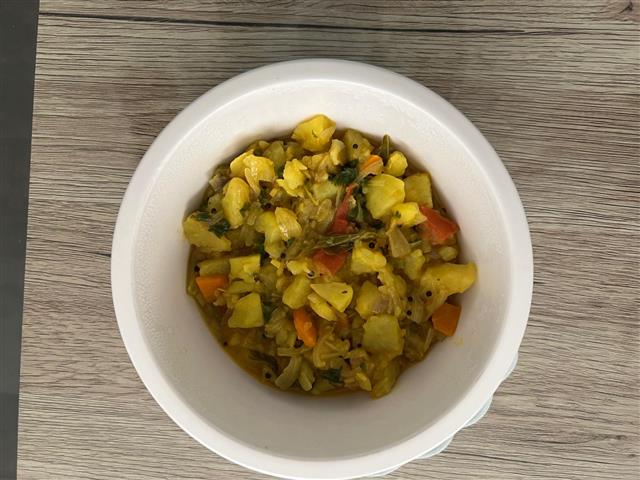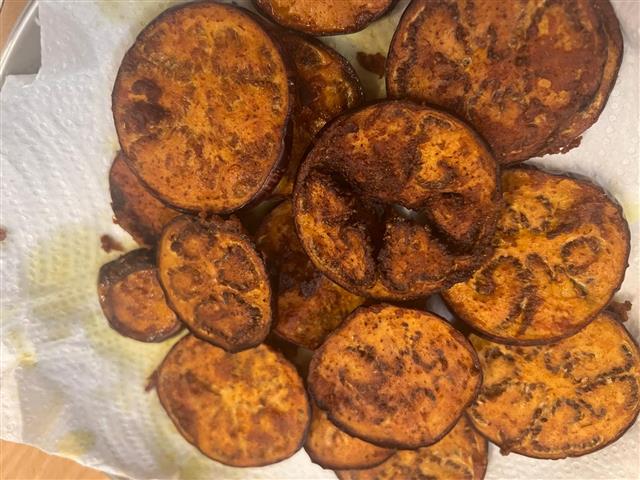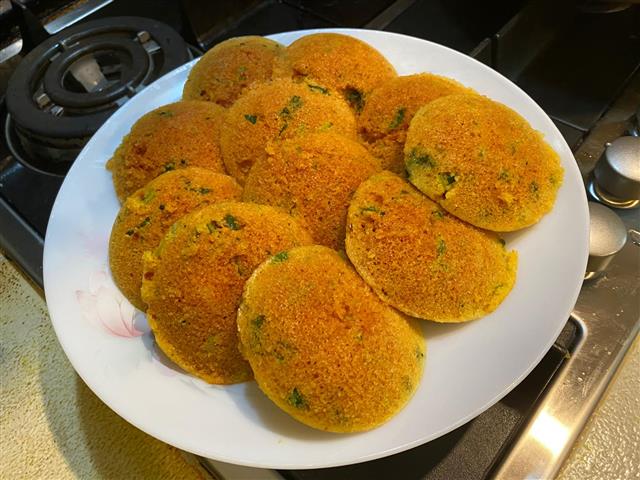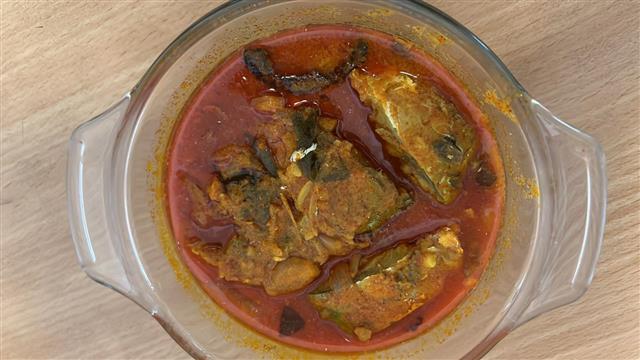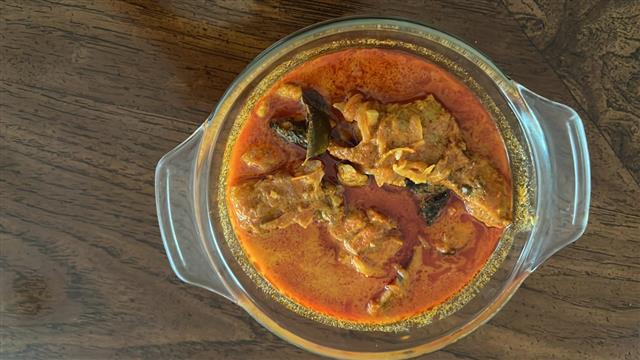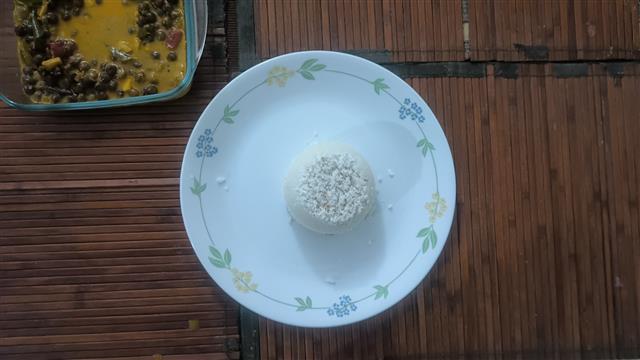
Crab Masala
(4 reviews)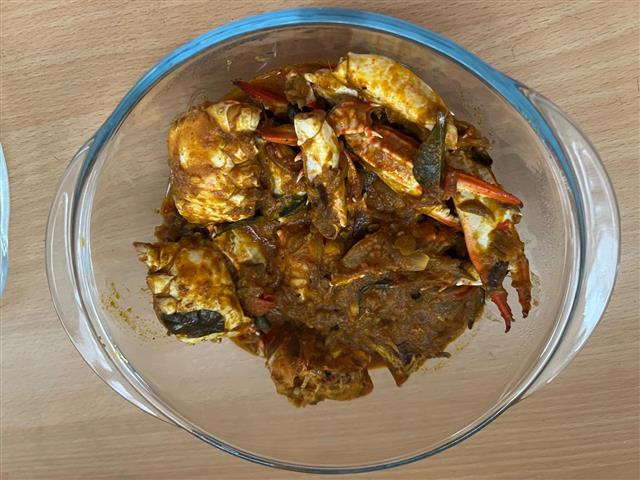
An ode to the coastal origins of this dish, succulent crab meat is simmered in a thick and fiery masala.
Infused with crushed spices, shallots, curry leaves, kudampuli, chillies, and coconut milk, Njandu or Crab Masala is a balance between heat and sweetness from slow-cooked aromatics.
Hearty, bold, and deeply comforting, this is a dish for those who love authentic crabs, Kerala food, and some coconut creaminess to round things out.
Best enjoyed with a bowl of steaming hot rice or tapioca mash.
Ingredients
Directions
- Clean the crab and keep it aside.
- Soak kudampuli (Malabar tamarind) in ¼ cup of water for 10 minutes.
- Heat coconut oil in a saucepan add the onion, green chili, shallots, ginger, and garlic. Saute for a minute.
- Add the rest of the ingredients. Saute for 2 to 3 minutes. until the flavours are released.
- Add chopped tomato and tamarind water. and stir well to combine
- Add cleaned raw crab, cover with lid, and cook on medium flame for 15 minutes.
- Add coconut milk and cook for 5 to 10 minutes or until well done.
Cooking Tips
How to Clean the Crab
• Pick a fresh crab and flip it. There is a flap or triangle shell at the bottom. Gently remove it. This helps you remove the top shell as well.
• Now remove the gills (lungs) and guts from the crab which don't taste good.
• Rinse the crab well under running water to remove any gooey liquids.
• Cut the small crab into half. Cut off legs from a large crab.
• Use a mallet to crack open the crab legs.
• Wash the crab again and remove excess water.
Cooking Tips
→ Always use fresh crab and clean it thoroughly.
→ Don't overcook. Crab meat turns rubbery if boiled for too long. It should be just cooked through to remain moist and tender.
→ Use smaller crabs for better flavor absorption and faster cooking. Larger ones are meatier but take longer to cook.
→ Crushing the ginger, garlic, and pepper manually in a mortar-pestle or spice grinder gives the spices more punch than using ready-made pastes.
How to Serve
• Serve hot with steamed matta rice or white rice.
• Kappa Vevichathu(savory mashed tapioca) or Appam for a traditional touch
• Pair with mezhukkupuratti or thoran to balance the spice and to serve guests.
• Papadam or banana chips on the side.
The Story Behind Crab Masala
Crab Masala or Njandu Masala is a much-loved Kerala seafood dish that combines the natural sweetness of crab with the depth of roasted spices and aromatics. There are several regional variations, but they all share a focus on bold flavour.
This dish takes me straight to childhood dinners with family. Mom always insisted on fresh crab and made a thick masala that was hot enough to wake up your taste buds but not make you sweat. In my grandma's village, it was served in the rustic style. The silence as everyone dug into the meat spoke for the flavour. Now, I make this dish not just to eat, but to remember those days and the warmth of a kitchen.
What is Njandu Masala?
Traditionally, the dish is made in a dry or roasted style, especially in toddy shop kitchens and among fishing communities. That version is bold, dark, and heavily spiced with no addition of coconut or coconut milk. Over time, families adapted the recipe to suit home kitchens with coconut milk–based versions emerging in southern and central Kerala.
This style of crab masala sits somewhere between the dry-roasted pepper masalas of toddy shops and the coconut-tomato curries of home kitchens. This version is popular in the southern districts of Kerala, where crab is often cooked on festive weekends or during family get-togethers.
Take your time to get it right. First, the onions are slow-roasted in coconut oil until they turn deep golden. Then come crushed garlic, pepper, red chillies and Malabar tamarind,
Some tomato and fennel or coriander seed tossed in, depending on your preference. You build the masala patiently, waiting until the oil starts to separate. Only then does the crab go in, with the leg shells already cracked to help soak up every bit of the sticky masala.
The use of thick coconut milk helps soften the heat of the spices and gives it a silky finish. Some households also include more chopped tomatoes and cook them with onions for a mellow tang.
Regional Variations
In places like Kollam, curry leaves are used generously, and coconut oil is the cooking fat of choice.
In Malappuram or Kannur, the dishes is dry and almost roasted, and feature more black pepper and less red chill,.
For coastal homes across Kerala, from Alappuzha to Kozhikode, Njandu Masala isn't just a recipe, it's an experience. The cleaning was a chore for sure, but it was also a shared task
That's the magic of Kerala crab masala. It isn't just spicy or comforting, it carries the taste of tradition, of family kitchens, and backwater breezes, and cast iron pans.
Pro Tips for Perfect Results
→ Use fresh and medium-sized mud crabs if possible as they absorb masala best.
→ Breaking the legs helps the spices enter the crab legs. They are both tasty and easier to consume after cooking.
→ Don't rush the onion browning stage. Slow cooking brings out sweetness and depth.
Crab Masala Variations
Marinate the crabs: Mix in turmeric, salt, ground black pepper, and rushed garlic. Add cleaned crab and toss well. This adds more depth of flavour.
With Coconut Paste: Add a few tablespoons of ground fresh coconut with cumin and pepper for a thicker, richer masala.
Crab Roast Style: Skip the coconut milk and cook in water until the masala is dry and the crab meat is almost roasted. Excellent with chapati or parotta.
With Tomato: Some families add more chopped tomatoes for a tangy base.
Crab Pepper Masala: Add crushed black pepper generously and skip the chilli powder for a black-pepper-forward version.
Thattukada Style: Marinate the crab meat in the spices for 30 minutes. Cook it well in the crab roast style. Fry curry leaves, green chillies, and onions in extra coconut oil. Toss with the cooked crab for a quick finish.
Storing & Reheating Tips
→ Refrigerator: Keeps well for up to 2 days. The flavor intensifies overnight.
→ Reheat: Reheat covered on low flame with a splash of water. Avoid microwaving as it dries out the crab.
→ Freeze: Not recommended. Crab meat loses its texture when frozen and thawed.
Best Tip: Always serve warm. Cold crab loses the richness of the masala.
Common Mistakes to Avoid
→ Overcooking: Crab should be just cooked. Overcooking makes it dry and chewy.
→ Watery Masala: This is a thicker curry dish. Add only minimal water while cooking.
→ High Flame Cooking: Cook on medium to low heat so the spices don't burn and stick.
→ Using Many Tomatoes: This can water down the masala and change the flavour. If you want to add more tomatoes, balance it with more spice and cook the tomatoes for longer.
Frequently Asked Questions
Can I use frozen crab? Yes, but fresh crab gives a sweeter, more tender result. If using frozen, thaw fully and pat dry before cooking.
Can I add plant milk? Traditionally, no. But if you don't like the taste of coconut, add thick almond milk at the end and heat gently.
Is this dish very spicy? It's moderately spicy. You can reduce the chilli or add more coconut or tomato to tone it down.
Equipment Needed
→ Heavy-Bottomed Kadai or Wok – To stir-fry the masala and cook the crab evenly.
→ Mortar and Pestle – For crushing ginger, garlic, and pepper in the traditional way.
→Cutting Board and Knife – For prepping onions and spices.
→ Lid for Kadai – Essential for simmering the crab covered.
→ Slotted Spoon – To flip and stir the crab pieces gently.
